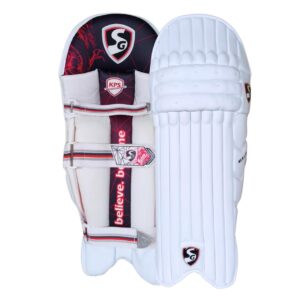Cricket, a game loved by millions around the globe, has undergone remarkable changes over the years. While bats and protective gear have evolved, the cricket ball has remained a central element, defining the nature of the game. Two primary types of balls dominate the world of cricket: the white ball and the red ball. These balls are much more than just tools; they shape gameplay strategies, influence player techniques, and even determine the pace and style of a match. The difference between a white and red ball extends beyond their appearance, affecting visibility, durability, and behavior on the field. In this article, we’ll delve deep into the fascinating distinctions and similarities that make these cricket balls unique.
History and Evolution of Cricket Balls
Origin of the Red Ball
The red ball used in cricket is steeped in tradition and is an integral part of Test cricket, the oldest and most enduring format. Test matches, often lasting five days, require equipment that can withstand long durations of play, and the red ball fits this requirement perfectly. The choice of red leather wasn’t accidental—it was selected because it stood out well against the backdrop of green fields during daylight, making it easier for players and umpires to track. Over centuries, the red ball has become a symbol of patience, endurance, and strategy, reflecting the spirit of Test cricket.
Introduction of the White Ball
The introduction of white ball cricket in the 1970s marked a significant shift in the sport. The move was primarily driven by the growing popularity of limited-overs cricket, particularly One Day Internationals (ODIs). Unlike Test matches, these games are played under floodlights, where visibility becomes crucial. The red ball proved difficult to spot under artificial lights, leading to the adoption of the white ball. This innovation improved visibility and made the game more engaging for television viewers, as the bright white color was more accessible to follow on screen. Over time, the white ball became synonymous with the fast-paced, action-packed formats of ODIs and T20 cricket.
Advent of the Pink Ball
The pink ball is a relatively recent development that addresses visibility challenges in day-night Test matches. It combines the best features of both the white and red balls, offering the durability of the red ball with the high visibility of the white ball. The pink ball has added a new dimension to Test cricket, allowing matches to be played in the evening while retaining the strategic depth of the most extended format.
Composition and Manufacturing
Core Structure
Despite the many differences in their use and behavior, white and red cricket balls share a similar core structure. Both balls are crafted from a cork core, wrapped in tightly wound string, and encased in high-quality leather. This construction ensures that the ball is durable and provides the necessary bounce and swing.
Color and Dye
One of the most noticeable differences between a white and red ball lies in their color and dye. The red ball is treated with a rich, deep dye that is designed to withstand the rigors of long matches. This dye not only gives the ball its characteristic color but also helps it age gracefully, making it ideal for longer formats like Test cricket. In contrast, the white ball is coated with a bright, reflective dye that enhances its visibility under artificial lights. However, this coating wears out faster, which is why white balls often need to be replaced during limited-overs games.
Seam and Stitching
Another critical distinction is the seam and stitching. The red ball typically has a more pronounced seam with thicker stitching, which allows bowlers to generate more swing and seam movement. This makes it a favorite for bowlers in Test cricket. The white ball, on the other hand, has smoother stitching, prioritizing aerodynamic consistency. This design is better suited for high-speed play in shorter formats, where batsmen are often on the attack.
Visual and Durability Differences
Visibility
Visibility is one of the most critical factors distinguishing the white ball from the red ball. The red ball is highly effective in natural daylight, making it ideal for Test matches played during the day. Its dark, rich color contrasts beautifully against the green field and the blue sky, providing clear visibility to players and umpires. The white ball, however, is specifically designed for nighttime play. Under floodlights, its bright color stands out, making it easier for batsmen and fielders to track.
Durability
When it comes to durability, the red ball is the clear winner. Its robust dye and tough leather coating allow it to retain its shape and shine for long periods, even in grueling Test matches. The white ball, while visually striking, wears out much faster. It gets dirty quickly, losing its shine and effectiveness, which often necessitates frequent replacements during a match.
Weight and Size
There is no significant white and red ball weight difference, as both are made to adhere to the same weight and size standards set by cricket’s governing bodies. However, the finishing and texture of the balls can influence their behavior during play.
Ball Behavior and Impact on Gameplay
Swing and Movement
In red-ball cricket, the ball swings for a longer duration, especially under humid or overcast conditions. This makes it a favorite for bowlers, who can use its movement to trouble batsmen. The white ball, by contrast, swings significantly in the early overs but loses this ability as the shine fades. This behavior often forces bowlers to adapt their strategies quickly.
Batting and Bowling Strategies
The red ball demands patience and technical skill from batsmen. Its consistent movement and longevity make it a challenge to face, especially during extended innings. In contrast, the white ball encourages aggressive play. Its shorter lifespan and reduced swing after a few overs make it easier for batsmen to go on the offensive. This contrast is one reason many argue that red-ball cricket is harder than white-ball formats, requiring more endurance and tactical adaptability.
Practical Differences in Match Formats
Test Matches (Red Ball)
The red ball used in cricket is synonymous with Test matches, which are all about endurance and strategy. Its durability, consistent performance, and ability to swing for long periods make it perfect for the slower rhythm of Test cricket.
ODIs and T20s (White Ball)
The white ball dominates in limited-overs formats like ODIs and T20s, where visibility and high-scoring games are crucial. Its behavior suits the fast-paced nature of these matches, ensuring a thrilling experience for players and fans alike.
Day-Night Test Matches (Pink Ball)
The pink ball, used in day-night Tests, strikes a balance between the white and red ball. It retains the swing and durability of the red ball while being visible under lights, making it an excellent choice for matches that span both day and night.
Maintenance and Care of the Balls
Red Ball Maintenance
Players polish the red ball regularly during play, using natural oils and sweat to maintain its shine. This helps bowlers generate swing and keeps the ball in top condition.
White Ball Maintenance
The white ball requires more frequent replacements during limited-overs games, as it gets dirty and loses its effectiveness quickly. Maintaining its shine and visibility is a constant challenge.
Pink Ball Maintenance
The pink ball has a special lacquer coating that helps it retain its color and shine during day-night matches. However, it requires careful handling to ensure optimal performance.
Psychological Impact on Players
Adaptation to Different Balls
Switching between the white and red cricket balls demands significant mental and technical adjustments from players. Bowlers need to modify their grip and delivery, while batsmen must adapt their techniques to counter the ball’s movement and behavior.
Batsmen vs. Bowlers
The red ball favors bowlers with its ability to swing and seam over long periods, making it more challenging for batsmen. The white ball, however, is more batter-friendly after the initial overs, encouraging aggressive play and high scores.
Conclusion
The difference between a white and a red ball extends far beyond their color. Each ball has its own unique characteristics that influence gameplay, strategies, and match formats. While the red ball is the cornerstone of Test cricket kit bag, demanding patience and endurance, the white ball adds excitement to ODIs and T20s with its fast-paced dynamics. Together, these balls ensure that cricket remains a versatile and thrilling sport, captivating players and fans across the world.
FAQs
The red ball’s darker color and matte finish make it less reflective, reducing its visibility under artificial lighting.
While possible, the white ball is unsuitable for Test matches due to its quick wear and limited durability over long periods.
The white ball swings well in the first few overs but loses this ability quickly, requiring bowlers to adapt their strategies.
The pink ball combines the durability of the red ball with the visibility of the white ball, making it perfect for matches played under both natural and artificial lights.















